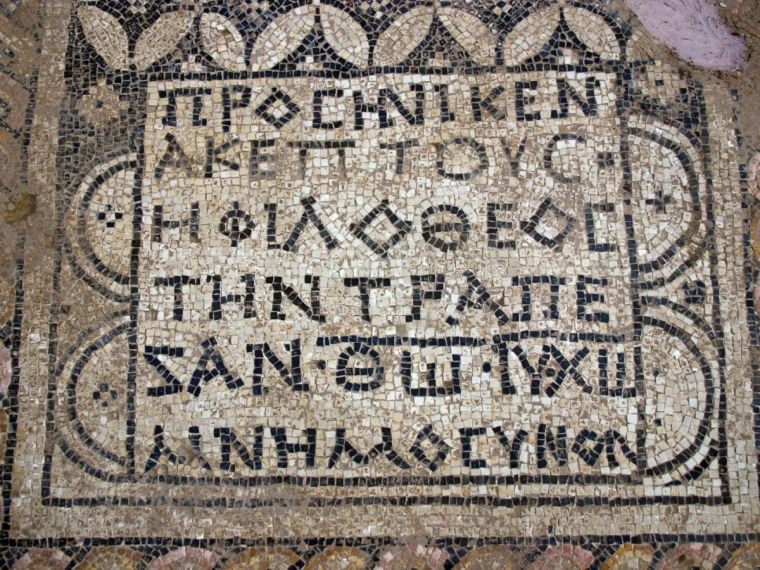Israel may loan ancient Christian mosaic which refers to Jesus as God to US museum
Mosaic described as 'extremely dramatic discovery' could be on long-term loan until proper tourist site built

An ancient Christian mosaic discovered near a prison in Megiddo could be removed from the site and sent to the Museum of the Bible in Washington, D.C.
The mosaic was originally discovered during excavations in 2005 near the Megiddo Prison, as authorities were preparing to expand and relocate the prison. The site is one of the oldest known Christian worship sites.
Yotam Tepper, the archaeologist who directed the excavation on behalf of the Israel Antiquities Authority (IAA), described it as a private chapel.
The principal mosaic of the excavation is an inscription describing the dedication of a table, most likely a Eucharist table, by a woman named Akeptous.

Leah Di Segni, a renowned epigraphist, interpreted the inscription to read: "The God-loving Akeptous has offered the table to God Jesus Christ as a memorial."
The phrase “God Jesus Christ” is written in abbreviated form Θω Ιυ Χω with a line above the letters, a common technique in Greek biblical manuscripts to indicate a reference to the nomina sacra (sacred name).
Other mosaics in the building also indicate the Christian nature of the building, including a mosaic of two fish, an early Christian symbol. The Christian use of the building has been dated to the third century, before the use of the cross as a Christian symbol.
At the time, Tepper described the find as “an extremely dramatic discovery.”
"This is an extremely dramatic discovery, because such an old building of this type has never been found either in the land of Israel or anywhere else in the entire region,” Tepper said. “The structure and the mosaic floor date back to the period before Christianity became an officially recognized religion, before Constantine.”
While the discovery of the mosaic and the dating by Tepper to the third century caused a bit of a stir in the archeological community following its discovery, it appears the proposal by the IAA to loan the mosaic to the Museum of the Bible is causing another fuss.
The IAA will decide in the coming weeks whether to loan the mosaic to the Museum of the Bible, according to a report in The Associated Press.
The museum, founded in 2010 and opened in 2017, became the focus of some controversy when it had to return several Mesopotamian artifacts to Iraq after it was discovered they had been illegally removed from that country.
While some have questioned the appropriateness of the IAA sending the mosaic to the Museum of the Bible, the museum does have a formal relationship with the organization and sponsors archaeological digs in Israel.
“There’s an entire process that academics and archaeologists are involved with,” IAA Director Eli Eskozido said. The IAA also said that the decision to move the mosaic from its original location was made to protect it from construction for the prison expansion.
One possibility for the loan is that it would be a long-term loan until the Israeli government finishes the prison construction along with a proposed tourist site dedicated to the Christian chapel and mosaics.
Neither the IAA nor the Museum of the Bible commented on the terms of the proposed loan.

The All Israel News Staff is a team of journalists in Israel.
You might also like to read this:















